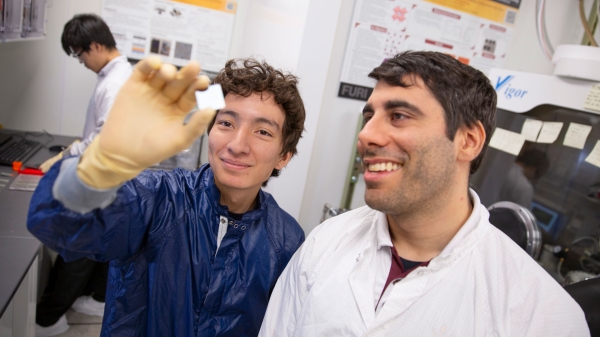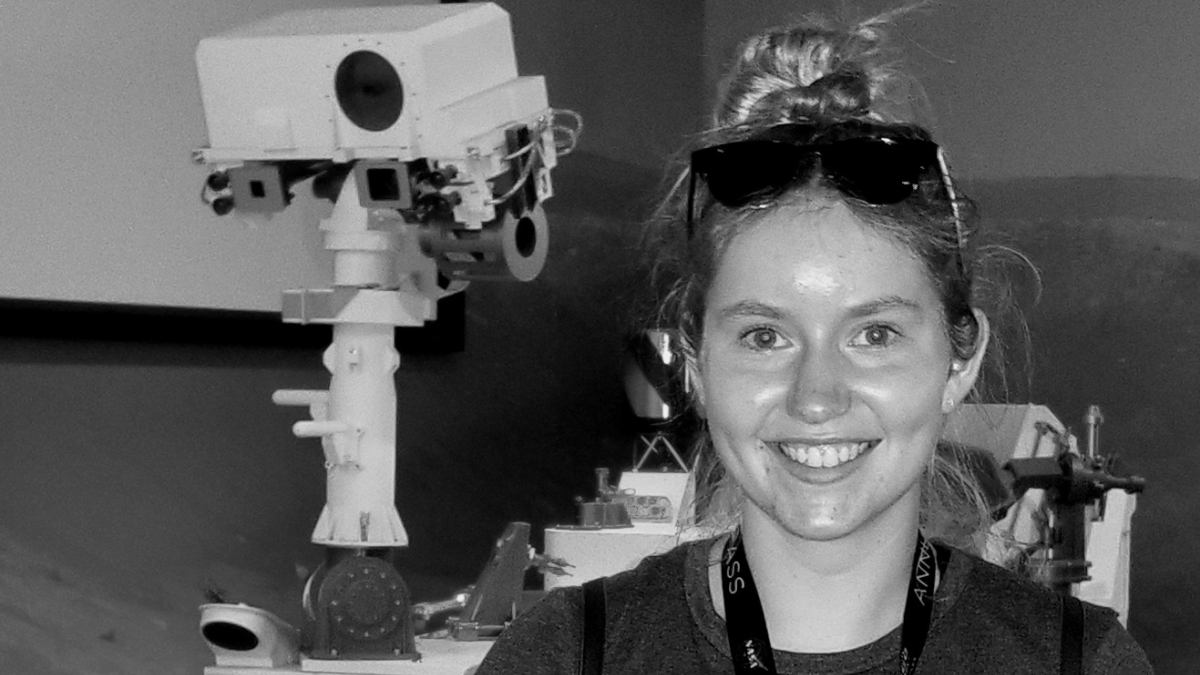Editor's note: This story is part of a series of profiles of notable spring 2022 graduates.
As a pre-teen, Emma Softich recalls watching an IMAX movie with her dad about the wonders of the Hubble Space Telescope and viewing the amazing images from the universe and beyond. She recalls at that moment thinking, “I want to do that!” and knowing this was the field she would study.
Softich moved from her hometown of Missoula, Montana, to attend ASU specifically for the unique astrophysics program, which highlights collaboration between the sciences. This spring, Softich, a recipient of the Ronald Greeley Planetary Geology Scholarship, will graduate with a Bachelor of Science in astrophysics and a minor in physics from ASU’s School of Earth and Space Exploration (SESE).
As part of her undergraduate research, Softich made a remarkable discovery: the widest imaged pair of brown dwarfs, intriguing objects whose masses are categorized between stars and planets. She was the lead author of a published paper on this discovery.
Through her experiences at ASU, Softich has learned valuable life lessons, including that “failure can be a learning experience.
“I was once the type of student who considered it to be the end of the world to get an A-minus, and I found that's not realistic," she said. "If you are learning and making progress, it doesn’t matter how many times you fall if you continue to get up.”
She credits Associate Professor Jennifer Patience and ASU collaborator Adam Schneider for learning the importance of collaboration and diversity of thought.
“Emma has shown a commendable interest in supporting the academic progress of incoming ASU SESE majors, serving as a mentor for freshmen in a semester-long class that matches upperclassmen with freshmen,” said Patience. “In the spring – when most seniors want to finish up and enjoy activities – Emma led weekly problem-solving sessions for the astrophysics majors.”
Following graduation, Softich will attend the University of California San Diego this fall to pursue a PhD in astrophysics.
“I am certain that Emma will advance the field of brown dwarf research, and she will be the first to volunteer to share new discoveries with other students and the public,” said Patience.
Softich shared a few thoughts about her time at ASU.
Question: What’s the best piece of advice you’d give to those still in school?
Answer: Keep going. Classes become more challenging, pandemics throw a wrench in things, but the only way forward is through. Keep going, because it gets better and in the end is worth it.
Q: What was your favorite spot on campus, whether for studying, meeting friends or just thinking about life?
A: The sixth-floor balcony in ISTB4. The view of campus is very pretty; it's a good place to study with friends or just sit and enjoy the fresh air.
Q: If someone gave you $40 million to solve one problem on our planet, what would you tackle?
A: I would put that money towards ending hunger in the U.S. According to Hunger Free America, it's estimated that it would take close to $25 billion to really end hunger in the U.S. But donating this $40 million would be a start.
More Science and technology

ASU researcher part of team discovering ways to fight drug-resistant bacteria
A new study published in the Science Advances journal featuring Arizona State University researchers has found…

ASU student researchers get early, hands-on experience in engineering research
Using computer science to aid endangered species reintroduction, enhance software engineering education and improve semiconductor…

ASU professor honored with prestigious award for being a cybersecurity trailblazer
At first, he thought it was a drill.On Sept. 11, 2001, Gail-Joon Ahn sat in a conference room in Fort Meade, Maryland.…
